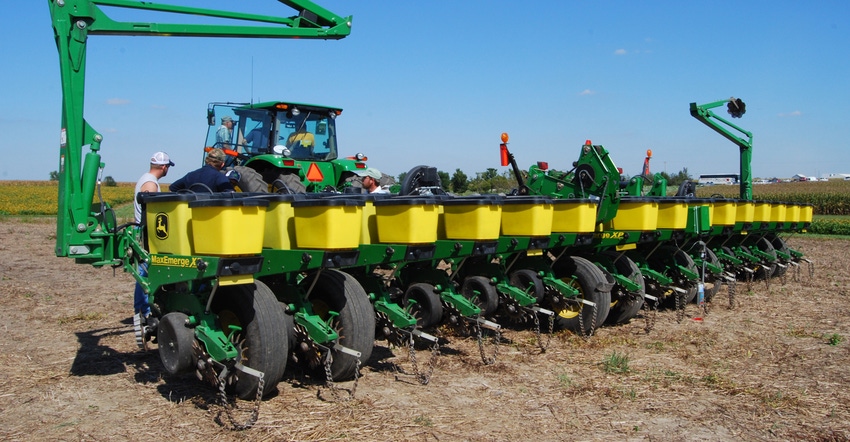May 13, 2019

Corn planting is delayed this spring due to cold weather. When should you switch from using a full-season maturity corn hybrid to one that has an earlier maturity for your area?
In Iowa, “it’s generally recommended to stay with full-season maturity corn hybrids through the May 20 to 25 window,” says Brian Lang, Iowa State University Extension field agronomist in northeast Iowa. “This requires some common sense as to how you define full season.”
As some farmers have gotten used to planting in April, they may have gone with a slightly longer than “normal” full-season hybrid and would switch to a “normal” full-season hybrid around May 10 to 15.
“If corn is not planted by May 25, it may be time to switch to a shorter-season hybrid,” Lang says. “Current ISU research actually supports staying with the full-season hybrid to the end of May; however, this is based on 2014 to 2016 trials, which had warmer-than-normal fall weather.”
For more information about this, visit ISU Extension. Obviously, farmers who have the option of using their corn as corn silage can stay with a “full season” hybrid longer.
Starter fertilizer can help
ISU agronomy professor Antonio Mallarino explains when starter fertilizer is most likely to benefit corn. Read his article Fertilization Can Help With Cool Soils and Late Planting Dates.
The more favorable conditions for the use of starter fertilizer are:
with lower than recommended P and K broadcast application rates
without primary N application before planting
cooler-than-normal soil temperatures
no-till with substantial crop residue cover and low preplant fertilizer application rates
continuous corn, especially in no-till with low or no preplant application rates
northern Iowa soils with moderate to poor drainage
late planting dates
5 tips for successful soybean planting
What’s the best soybean planting rate, date, depth, row spacing, etc.? ISU’s Brian Lang offers these guidelines:
1. Rate. The general recommendation is to seed between 125,000 and 140,000 seeds per acre, regardless of row spacing and planting date, but usually including seed treatment especially with cooler soil conditions, with the goal to harvest 100,000-plus plants per acre. Watch the percent germination on the seed tags and increase the seeding rate accordingly for lower percentage germ.
University recommendations from neighboring states agree. University of Nebraska recommends seeding 120,000 seeds per acre and aim for a final plant stand of 100,000 plants per acre. University of Wisconsin recommends that you target a final stand of 100,000-plus plants in productive fields, and 135,000-plus plants in low productive fields or low productive areas within fields; and plant less than 140,000 seeds in white mold areas.
2. Date. Late April through mid-May is best time to plant soybeans in Iowa, as long as the soil is fit.
3. Depth. Plant soybeans 1 to 1.5 inches deep, and never deeper than 2 inches. Adequate soil moisture is the most important factor controlling soybean germination. Soybean seed must imbibe 50% of its weight in moisture for germination to begin. Germination will be significantly reduced if moisture levels in the seed fall below 20% after the seed swells and the seed coat splits.
That’s why agronomists recommend placing soybean seed into at least a half inch of moist soil at planting. Under dry soil conditions, this may not be possible without planting the seed too deep.
4. Row space. In general, ISU research shows an average yield increase of 4.5 bushels per acre for narrow rows (15 or 20 inches) compared to 30 inches.
5. Soybean inoculant. In general, ISU agronomists advise adding rhizobia inoculum to soybean seed if:
no soybeans growing in field for last three to five years
environmental factors such as flood or drought destroying bacteria
sandy soil, not a loam or silt loam
soil pH too low for bacterial development (Correct with a lime application for next year.)
About the Author(s)
You May Also Like






